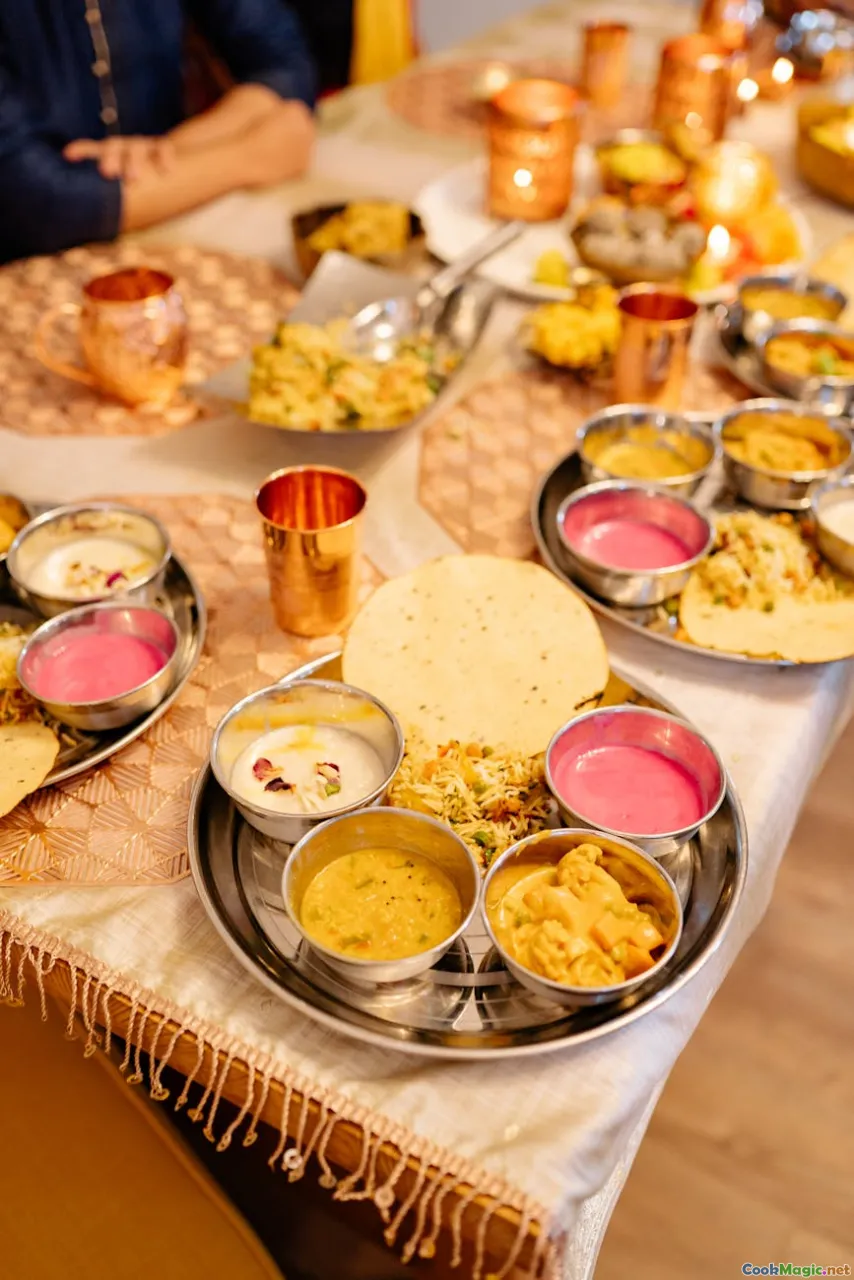How Indian Cuisine Influences Kenyan Dishes
7 min read Explore the rich culinary exchange between India and Kenya, revealing how Indian spices, techniques, and traditions have shaped Kenyan food culture. April 23, 2025 11:55
How Indian Cuisine Influences Kenyan Dishes
Imagine walking through the bustling streets of Nairobi, where the aroma of spices wafts through the air—cumin, turmeric, coriander—each whispering tales of distant lands. Kenya’s culinary landscape is a vibrant mosaic, woven with threads of its indigenous roots and the colorful influence of Indian cuisine. This fascinating culinary symbiosis is not just a matter of taste but a story of migration, trade, and cultural exchange that spans centuries.
The Historical Bridge: Indian Migration to Kenya
The story of Indian influence in Kenya begins long before the modern nation was born. During the late 19th and early 20th centuries, the British colonial administration brought indentured Indian laborers to work on the construction of the Kenya-Uganda Railway. These migrants, primarily from Gujarat and Punjab, settled across Kenya, establishing vibrant communities that became integral to the country's social and economic fabric.
Over time, their culinary traditions, rich with spices, flavors, and techniques, merged with local ingredients and cooking styles, creating a unique culinary tapestry. The Indian community in Kenya grew, thriving amidst the diverse ethnic groups, and their food became a staple in urban markets, street stalls, and homes.
The Spicy Imprint: Key Elements of Indian Influence
Spices and Flavors
Indian cuisine is renowned for its bold use of spices—cumin, coriander, cardamom, cloves, and turmeric—that add depth and warmth to dishes. In Kenya, these spices are now fundamental ingredients in many traditional recipes, transforming simple ingredients into flavorful, aromatic meals.
For example, the ubiquitous pilau—a fragrant rice dish infused with a blend of spices—owes its roots to Indian biryani and pilaf traditions. The vibrant yellow hue of Kenyan pilau comes from turmeric, while the aromatic warmth from cardamom and cloves elevates it to a celebration on every occasion.
Cooking Techniques
Many Kenyan dishes feature techniques borrowed from Indian culinary practices. Tempering or 'tadka'—the process of frying spices in oil to release their flavors—is now commonplace in Kenyan kitchens, elevating the taste profiles of stews and curries.
Use of Lentils and Legumes
Lentils, chickpeas, and beans—staples in Indian diets—have found a permanent place in Kenyan cuisine. Dishes like kikuyu beansormukimo incorporate these ingredients, often cooked with spices reminiscent of Indian dal preparations.
Iconic Kenyan Dishes with Indian Roots
Nyama Choma with Indian Spices
While nyama choma (grilled meat) is a Kenyan staple, some vendors infuse their marinades with Indian spices like cumin, garam masala, and turmeric, creating a fusion flavor that excites the palate.
Sukuma Wiki with Indian Flavor
The popular collard greens, sukuma wiki, are often sautéed with garlic, ginger, and sometimes a dash of curry powder—an Indian influence—adding layers of flavor to a simple vegetable dish.
Indian-Inspired Snacks and Street Food
Kenyan street food vendors serve samosas filled with spicy potatoes, peas, and meat—an unmistakable Indian influence. These crispy, golden snacks are now a staple at gatherings and markets.
The Evolution of Ugali
Ugali, Kenya’s beloved maize porridge, has been complemented by Indian-style gravies and curries, turning it into a versatile base for a variety of flavorful toppings.
Personal Narratives: The Taste of Cultural Fusion
As a food enthusiast, I remember my first encounter with Indian-influenced Kenyan food during a visit to Kisumu. The aroma of a steaming pot of pilau, seasoned with fragrant spices, transported me to the bustling markets of Mumbai. The rich, savory flavor of the meat curry served alongside ugali was an eye-opener—an exquisite blend of two worlds.
Locals often share stories of family recipes passed down through generations, where spices are measured with love and stories are told through flavors. For many, these dishes are more than just sustenance—they are a testament to resilience, adaptation, and shared heritage.
The Cultural Significance of Food Fusion
Food is a living testament to history. The Indian influence in Kenyan cuisine is a reflection of centuries of migration and trade, embodying a spirit of cultural openness. It fosters a sense of unity among diverse communities, creating dishes that are both familiar and exciting.
In modern Kenya, chefs are experimenting further—blending traditional Indian techniques with local ingredients to craft innovative dishes that honor this shared history. Restaurants serving Indo-Kenyan fusion cuisine are now popular hotspots where tradition meets innovation.
Final Thoughts: A Delicious Heritage
The influence of Indian cuisine on Kenyan dishes is a flavorful narrative etched into every bite. It’s a story of perseverance, adaptation, and the beautiful complexity that results when cultures intertwine. Whether it’s the aromatic pilau, spicy samosas, or seasoned vegetables, each dish bears witness to a shared culinary journey.
As you savor your next Kenyan meal, take a moment to appreciate the layers of history and culture infused into every ingredient. Because behind every flavorful bite lies a story—one of migration, resilience, and the enduring power of food to unite us across borders.
In essence, Kenyan cuisine is a living mosaic, constantly evolving while honoring its roots. The Indian influence is not just a flavor profile but a testament to a shared history that continues to spice up the culinary landscape of Kenya.









